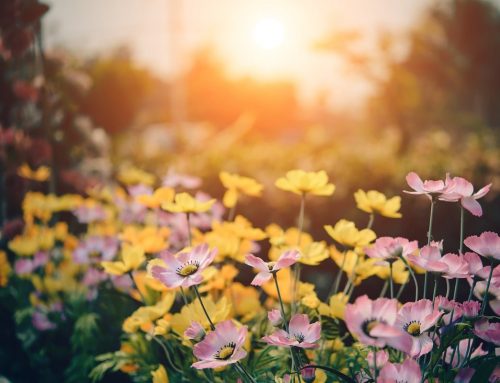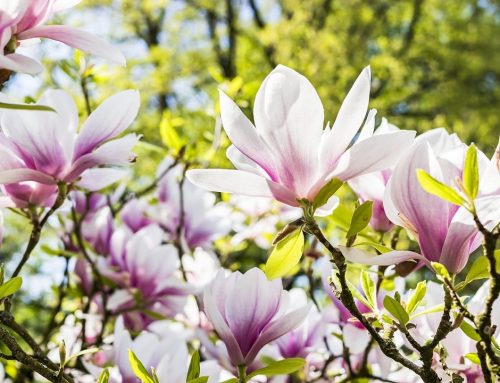The rose is probably one of the most popular flowers worldwide. It is a universal symbol of love, desire and beauty. While most homeowners admire the distinct beauty and scent of roses, many are wary of taking care of roses in their garden. There’s this idea that roses are notoriously difficult to grow and maintain.
If you’ve been afraid of starting a rose garden, we’re here to provide a complete guide on how to grow roses and care for these beauties.
Types of roses
Before we delve into the essential steps involved in growing roses, let’s first know more about the different types. There are several ways you could categorise roses, from their size to their species. One useful way to identify them is according to when they were first introduced:
Old roses
Termed ‘old-fashioned roses’ or ‘heirloom roses’, old roses have been around since the 17th century. Old roses are lush and fragrant with over a hundred varieties that could adapt to any climate.
Modern hybrid roses
Introduced after 1867, these are sturdy roses that provide a longer bloom after spring. Hybrid roses are generally bred for different colours, sizes and scents.
Species or wild roses
As the name suggests, wild roses are those that grow untended for their whole duration. Many gardeners admire their natural beauty and hardiness, which is why they are added to home gardens.
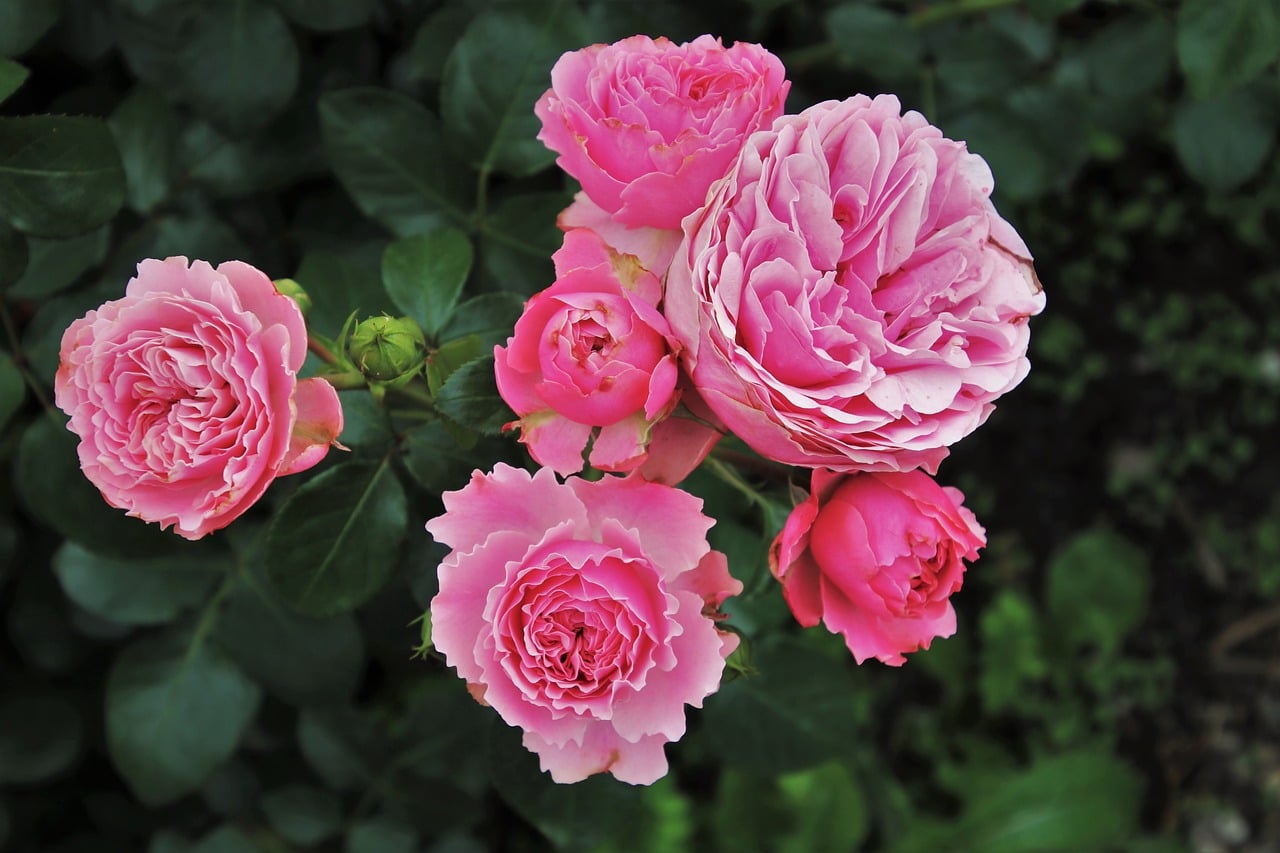 " data-srcset="/wp-content/uploads/2019/01/roses-3481982_1280-20x13.jpg 20w, /wp-content/uploads/2019/01/roses-3481982_1280-200x133.jpg 200w, /wp-content/uploads/2019/01/roses-3481982_1280-300x200.jpg 300w, /wp-content/uploads/2019/01/roses-3481982_1280-400x267.jpg 400w, /wp-content/uploads/2019/01/roses-3481982_1280-600x400.jpg 600w, /wp-content/uploads/2019/01/roses-3481982_1280-768x512.jpg 768w, /wp-content/uploads/2019/01/roses-3481982_1280-800x533.jpg 800w, /wp-content/uploads/2019/01/roses-3481982_1280-1024x682.jpg 1024w, /wp-content/uploads/2019/01/roses-3481982_1280-1200x800.jpg 1200w, /wp-content/uploads/2019/01/roses-3481982_1280.jpg 1280w" data-sizes="auto" data-orig-sizes="(max-width: 1280px) 100vw, 1280px" />
" data-srcset="/wp-content/uploads/2019/01/roses-3481982_1280-20x13.jpg 20w, /wp-content/uploads/2019/01/roses-3481982_1280-200x133.jpg 200w, /wp-content/uploads/2019/01/roses-3481982_1280-300x200.jpg 300w, /wp-content/uploads/2019/01/roses-3481982_1280-400x267.jpg 400w, /wp-content/uploads/2019/01/roses-3481982_1280-600x400.jpg 600w, /wp-content/uploads/2019/01/roses-3481982_1280-768x512.jpg 768w, /wp-content/uploads/2019/01/roses-3481982_1280-800x533.jpg 800w, /wp-content/uploads/2019/01/roses-3481982_1280-1024x682.jpg 1024w, /wp-content/uploads/2019/01/roses-3481982_1280-1200x800.jpg 1200w, /wp-content/uploads/2019/01/roses-3481982_1280.jpg 1280w" data-sizes="auto" data-orig-sizes="(max-width: 1280px) 100vw, 1280px" />
Where the wild roses grow
Species or wild roses tend to thrive with little care in terms of watering, fertilising and soil upkeep.
As they are wild, they could grow in just about any soil condition, be it dry or wet soil. These tough roses can bloom all throughout the seasons. In the late summer, they will produce those small, apple-like rose hips that carry over for much of winter.
Wild roses spread an extensive root system, which means they could die in the winter, and by the time spring comes, what grows from the root will still be the same beautiful rose. And their roots serve as great erosion control for slopes and elevated areas. Wild roses could thrive in just about any kind of land – whether it’s a ravine, an open wooded area, a prairie or a plateau.
How to grow roses from seeds
If you are planning to grow your very own rose garden, you could opt to propagate them from seeds. This takes time but growing a lot of seeds at one time could give you one or two seedlings that will sprout.
Here are some steps on how to grow roses from seeds:
- Before planting your seeds, you need to germinate If you’re using store-bought seeds that are already stratified, you could go ahead and plant them. But otherwise, you have to germinate them.
To do this, soak the seeds in water alone or water mixed with hydrogen peroxide. The chemical will help keep moulds from growing on the seeds. Stir 1.5 teaspoons of hydrogen peroxide into a cup of water. Soak the rose seeds in the solution for about an hour. - Afterwards, place the seeds in damp material. These seeds will sprout if placed in cold, wet conditions. You could use damp paper towels under the seeds. Place the seeds in a plastic bag or sealable container with sand and peat.Seal the bag and leave it in the refrigerator for 10 days. Remember not to keep them near fruits and vegetables, as these can release chemicals that prevent seeds from germinating.Check regularly to make sure that it’s moist. Some seeds might need longer periods in this condition.
- Plant the rose seeds a quarter of an inch deep in a seed planting mix. Use seedling or planting trays. Use separate trays if you are growing different species and label the trays with the name and planting date. Make sure your planting mix is just moist, not wet. Seal the trays and place again in the refrigerator for 10 to 12 weeks.
- After the stratification or germination process, take the containers out of the fridge and place in a warm environment of about 70°F (21°C). It’s best to mimic their usual sprouting time, which is early spring.
- Around 2-3 weeks should be enough to see some sprouts. Don’t feel bad if only 20% of rose seeds actually go on to sprout because that’s just how it is. Once the seeds sprout, transfer the seedlings into other pots. Don’t touch the roots! Use a spoon when you handle the seedlings.Do not over water the seedlings. Put a bit of fertiliser or fungicide to help the seedlings grow strong. And make sure they get enough sunlight.
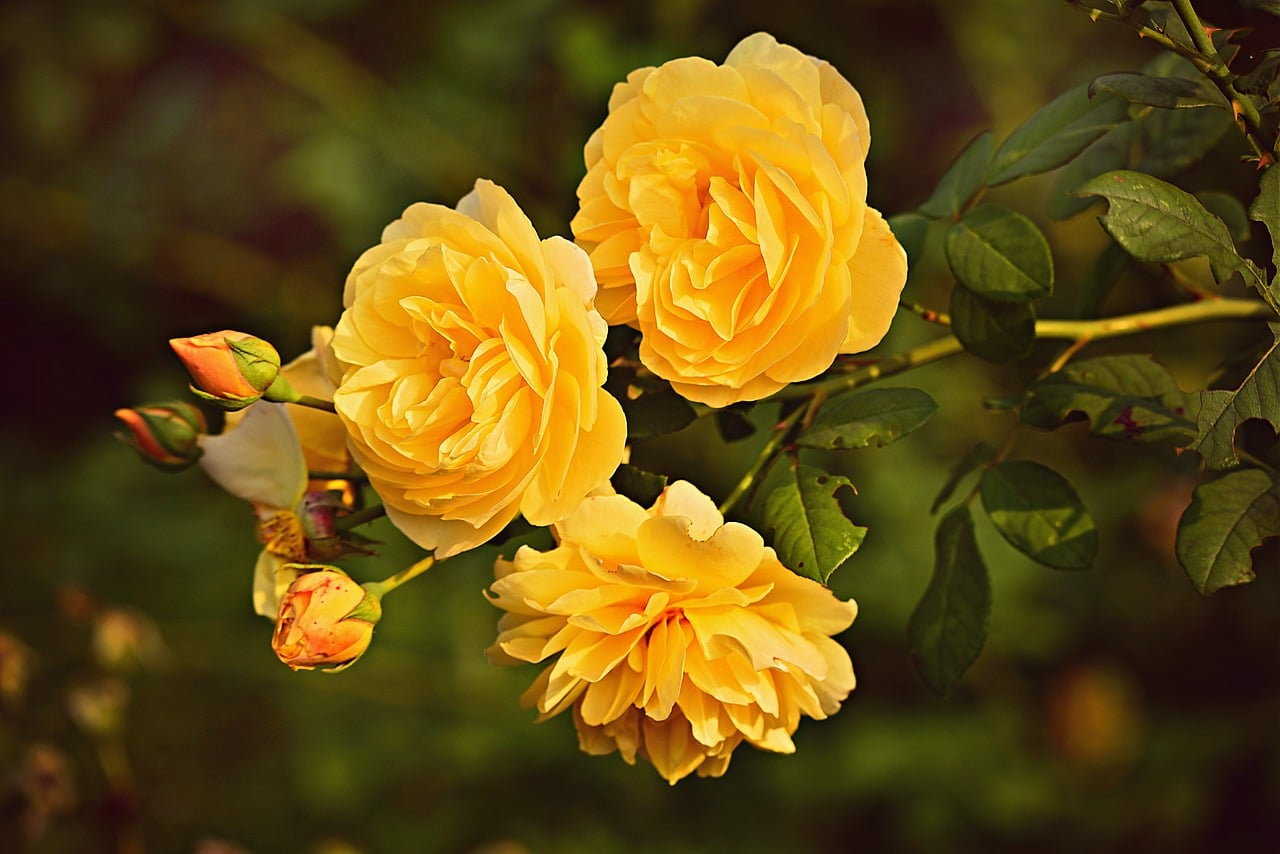 " data-srcset="/wp-content/uploads/2019/01/yellow-rose-3865041_1280-20x13.jpg 20w, /wp-content/uploads/2019/01/yellow-rose-3865041_1280-200x133.jpg 200w, /wp-content/uploads/2019/01/yellow-rose-3865041_1280-300x200.jpg 300w, /wp-content/uploads/2019/01/yellow-rose-3865041_1280-400x267.jpg 400w, /wp-content/uploads/2019/01/yellow-rose-3865041_1280-600x400.jpg 600w, /wp-content/uploads/2019/01/yellow-rose-3865041_1280-768x512.jpg 768w, /wp-content/uploads/2019/01/yellow-rose-3865041_1280-800x534.jpg 800w, /wp-content/uploads/2019/01/yellow-rose-3865041_1280-1024x683.jpg 1024w, /wp-content/uploads/2019/01/yellow-rose-3865041_1280-1200x801.jpg 1200w, /wp-content/uploads/2019/01/yellow-rose-3865041_1280.jpg 1280w" data-sizes="auto" data-orig-sizes="(max-width: 1280px) 100vw, 1280px" />
" data-srcset="/wp-content/uploads/2019/01/yellow-rose-3865041_1280-20x13.jpg 20w, /wp-content/uploads/2019/01/yellow-rose-3865041_1280-200x133.jpg 200w, /wp-content/uploads/2019/01/yellow-rose-3865041_1280-300x200.jpg 300w, /wp-content/uploads/2019/01/yellow-rose-3865041_1280-400x267.jpg 400w, /wp-content/uploads/2019/01/yellow-rose-3865041_1280-600x400.jpg 600w, /wp-content/uploads/2019/01/yellow-rose-3865041_1280-768x512.jpg 768w, /wp-content/uploads/2019/01/yellow-rose-3865041_1280-800x534.jpg 800w, /wp-content/uploads/2019/01/yellow-rose-3865041_1280-1024x683.jpg 1024w, /wp-content/uploads/2019/01/yellow-rose-3865041_1280-1200x801.jpg 1200w, /wp-content/uploads/2019/01/yellow-rose-3865041_1280.jpg 1280w" data-sizes="auto" data-orig-sizes="(max-width: 1280px) 100vw, 1280px" />
How to grow roses from cuttings
Roses tend to root quite easily, but the thing is, most varieties are actually grafted onto the rootstock of a different type of rose than the top flowering part. Hence, the rose you graft could grow into a totally different rose than the one you got the cuttings from!
Here are the steps on how to use rose cuttings
- Remove the flower, as it gets all the plant’s energy. Once cut, the stem can refocus its nutrients on spreading out new roots. Also, remove all excess leaves except the top 2 leaflets on the stem. You want the stem to still be able to photosynthesise, so leave a few leaves intact.
- Using a pruner, make a small cut on the bottom of the stem, about 1/4 of an inch. Dip the cutting into some rooting hormone powder. This is not required, but it helps boost root development.
- Make a hole in your planting site deep enough for half of the stem’s length to go in. Gently insert the stem into place. Water the cutting well. Give about eight inches of space for each cutting. You could also place a jar or plastic cover on top of each cutting to create a mini-greenhouse. But be careful if the sun is too hot, as the cover could overheat the cutting and kill it. And make sure condensation could escape or else your cuttings will rot.
When to fertilise roses
Roses are healthy eaters, so feeding them is a critical part of caring for them. Feed roses religiously both before and all throughout the blooming season.
- Begin fertilising when you have 4 to 6 inches of growth. Granular fertilisers are usually too potent for young plants to process. You could instead use liquid fertiliser during the first growing season to avoid burning of roots.
- Once your roses have matured, use granular fertiliser once a month during spring (use 5-10-5 or 5-10-10). Sprinkle about a cup for each rose bush, careful to place it around and not directly on the stem. During summer, add in a tablespoon of Epsom salts to your fertiliser.
- You could also put banana peels as it is a good source of calcium, sulphur, magnesium and phosphates. You could put peels at the base of the bush or bury a banana in the soil.
- Observe your roses and fine-tune your feeding methods. Keep in mind that some varieties will not be able to handle granular fertilisers. For instance, miniature roses can only handle liquid fertilisers.
- And of course, watch your roses closely to check if they are growing well. Besides the quality of the flowers, the leaves could tell you if the roses need more nutrition. If the leaves look yellowish, you may need to add iron. Manganese deficiency could also manifest in leaves that are not dark green in colour.
How often to water roses
Roses love water, but it’s important not to drown them and make the soil too wet. They don’t like to sit in water.
Here are some tips on how to water your rose bushes:
- Water them regularly, soaking the root zone at least twice a week in dry summer weather. You don’t have to do frequent sprinklings because this might encourage fungus formation. Lessen the water by fall, but water the roses still. Don’t ever let them be completely dried out.
- Make sure your soil isn’t soaking wet. Roses could die if the soil is always too wet, especially in the winter. Allow good drainage for your soil so it stays loose and rich.
- Roses can benefit from mulch, as it could encourage good growth while you could lessen the times you have to water them. Apply a 2- to 4-inch layer of shredded leaves, bark and clippings around the base of your roses.
How to prune roses
Pruning roses should be done to remove old or diseased parts and keep your roses healthy. Most beginners tend to be scared of pruning, thinking that it might cause harm to their blooms.
As a matter of fact, the most common pruning error is not pruning hard enough!
But it’s a very important step for your roses because it removes all the mess and leaves you the essential frame of the rose to help it be renewed.
When pruning roses, remember to:
- Remove all dead and damaged canes (brown ones) and cut about one-third to half of the growth until you get to the healthy white centres inside the cane.
- Deadhead regularly to keep the beds clean. Roses have growth buds on each leaf, which means removing old flowers actually helps the plant make new flowers. If your roses are ‘self-cleaning’, or they don’t develop rose hips, there’s no need for deadheading because the dried blooms will drop off and the bush will just produce more flowers.
- Always keep the area around the bush free from debris to prevent attracting any harmful insects or diseases.
- Have the right equipment to prevent accidents. Use pruning shears for smaller bushes, and loppers for bigger growth. And wear protective elbow-length gloves and safety goggles. You wouldn’t want to get scratched and pricked by those thorny branches!
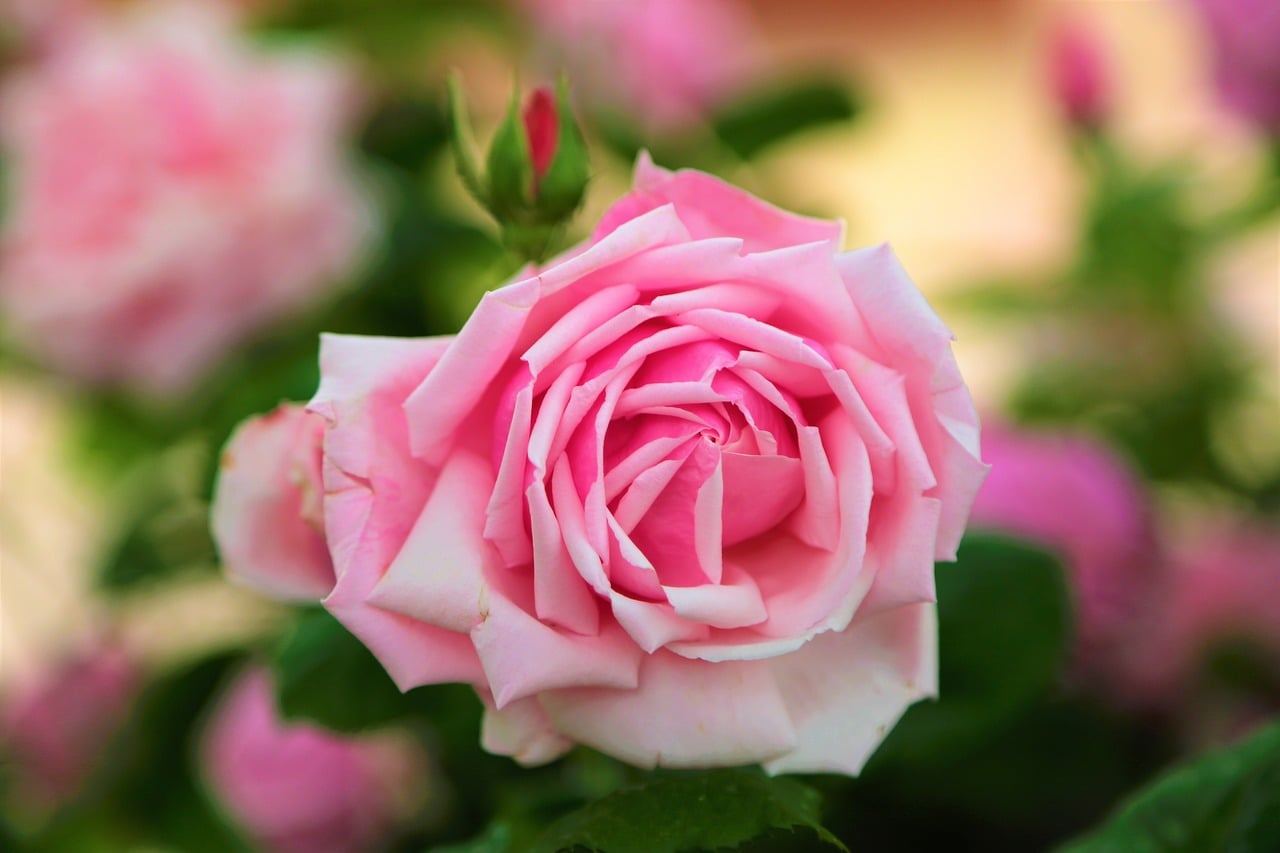 " data-srcset="/wp-content/uploads/2019/01/rose-3748303_1280-20x13.jpg 20w, /wp-content/uploads/2019/01/rose-3748303_1280-200x133.jpg 200w, /wp-content/uploads/2019/01/rose-3748303_1280-300x200.jpg 300w, /wp-content/uploads/2019/01/rose-3748303_1280-400x267.jpg 400w, /wp-content/uploads/2019/01/rose-3748303_1280-600x400.jpg 600w, /wp-content/uploads/2019/01/rose-3748303_1280-768x512.jpg 768w, /wp-content/uploads/2019/01/rose-3748303_1280-800x533.jpg 800w, /wp-content/uploads/2019/01/rose-3748303_1280-1024x682.jpg 1024w, /wp-content/uploads/2019/01/rose-3748303_1280-1200x800.jpg 1200w, /wp-content/uploads/2019/01/rose-3748303_1280.jpg 1280w" data-sizes="auto" data-orig-sizes="(max-width: 1280px) 100vw, 1280px" />
" data-srcset="/wp-content/uploads/2019/01/rose-3748303_1280-20x13.jpg 20w, /wp-content/uploads/2019/01/rose-3748303_1280-200x133.jpg 200w, /wp-content/uploads/2019/01/rose-3748303_1280-300x200.jpg 300w, /wp-content/uploads/2019/01/rose-3748303_1280-400x267.jpg 400w, /wp-content/uploads/2019/01/rose-3748303_1280-600x400.jpg 600w, /wp-content/uploads/2019/01/rose-3748303_1280-768x512.jpg 768w, /wp-content/uploads/2019/01/rose-3748303_1280-800x533.jpg 800w, /wp-content/uploads/2019/01/rose-3748303_1280-1024x682.jpg 1024w, /wp-content/uploads/2019/01/rose-3748303_1280-1200x800.jpg 1200w, /wp-content/uploads/2019/01/rose-3748303_1280.jpg 1280w" data-sizes="auto" data-orig-sizes="(max-width: 1280px) 100vw, 1280px" />
When to prune roses in Sydney and most of New South Wales
In the Sydney and NSW climate, winter pruning is usually done in July or early August. If your garden has frost, delay pruning at a later date so that new growth will not be damaged by the cold.
Don’t worry if there are a few lingering flowers that refused to go dormant during the winter. Just cut them off and proceed to pruning your rose bush.
Also, some roses flower in late winter or spring. Don’t prune them until after they have bloomed. Some varieties include banksia roses, old-fashioned roses, and most ramblers.
How to get rid of aphids and other pests on roses
Nothing is more frustrating than seeing pests attack your lush roses. All kinds of aphids are drawn to roses. Aphids suck the sap out of the rose tissues and excrete sweet material, called honeydew. This attracts ants that in turn protect the aphids from other predators.
In warm climates, aphids could reproduce all throughout the year, which is bad news for your roses.
If you want homemade solutions to removing aphids, try any of these remedies:
- Orange oil cleaner: Dilute one teaspoon per gallon of water, and spray on your rose leaves. Spray on the leaves until they are dripping.
- Soap spray: Mix half a teaspoon of soap and one tablespoon cooking oil. Spray liberally all around the bush. You could also add a pinch of cayenne pepper to this solution.
- Beneficial insects: Ladybugs, lacewings and parasitic wasps all feed on aphids. You can order these insects online or through your local gardening store.
- Companion planting: Aphids hate garlic and mint, so if you can, place these plants around your roses.
- Water
Sometimes, all you need is to blast water on these pests. They are usually unable to go back to the plant when dislodged.
Wrap Up
Roses are undeniably beautiful and a great addition to any outdoor space. If you are intimidated by the whole idea of having to grow and take care of rose bushes, consult with Garden-R today and we will help you get started on your very own rose garden!

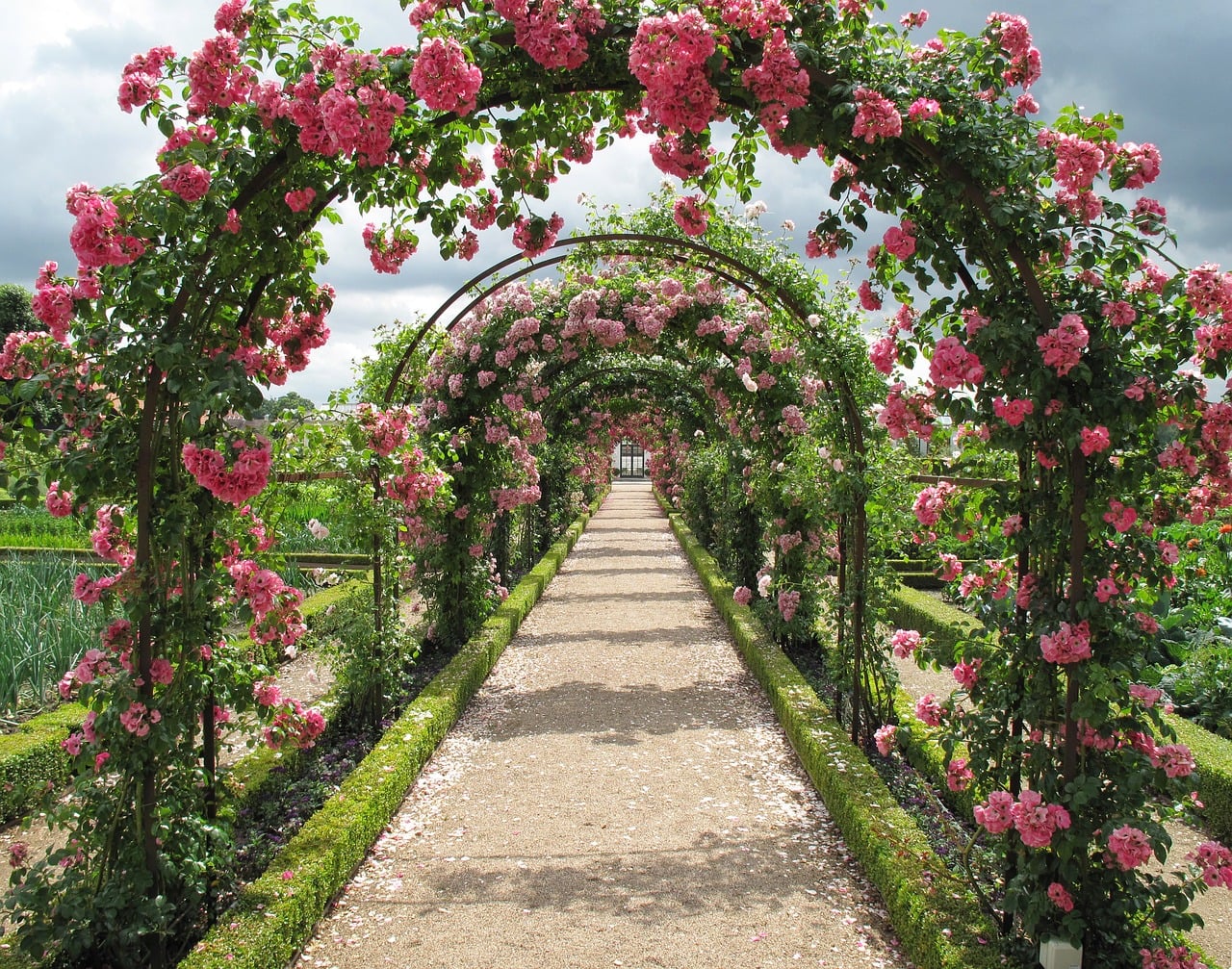 " data-orig-src="/wp-content/uploads/2019/01/roses-garden.jpg" data-srcset="/wp-content/uploads/2019/01/roses-garden-200x157.jpg 200w, /wp-content/uploads/2019/01/roses-garden-400x315.jpg 400w, /wp-content/uploads/2019/01/roses-garden-600x472.jpg 600w, /wp-content/uploads/2019/01/roses-garden-800x629.jpg 800w, /wp-content/uploads/2019/01/roses-garden-1200x944.jpg 1200w, /wp-content/uploads/2019/01/roses-garden.jpg 1280w" data-sizes="auto" />
" data-orig-src="/wp-content/uploads/2019/01/roses-garden.jpg" data-srcset="/wp-content/uploads/2019/01/roses-garden-200x157.jpg 200w, /wp-content/uploads/2019/01/roses-garden-400x315.jpg 400w, /wp-content/uploads/2019/01/roses-garden-600x472.jpg 600w, /wp-content/uploads/2019/01/roses-garden-800x629.jpg 800w, /wp-content/uploads/2019/01/roses-garden-1200x944.jpg 1200w, /wp-content/uploads/2019/01/roses-garden.jpg 1280w" data-sizes="auto" /> 